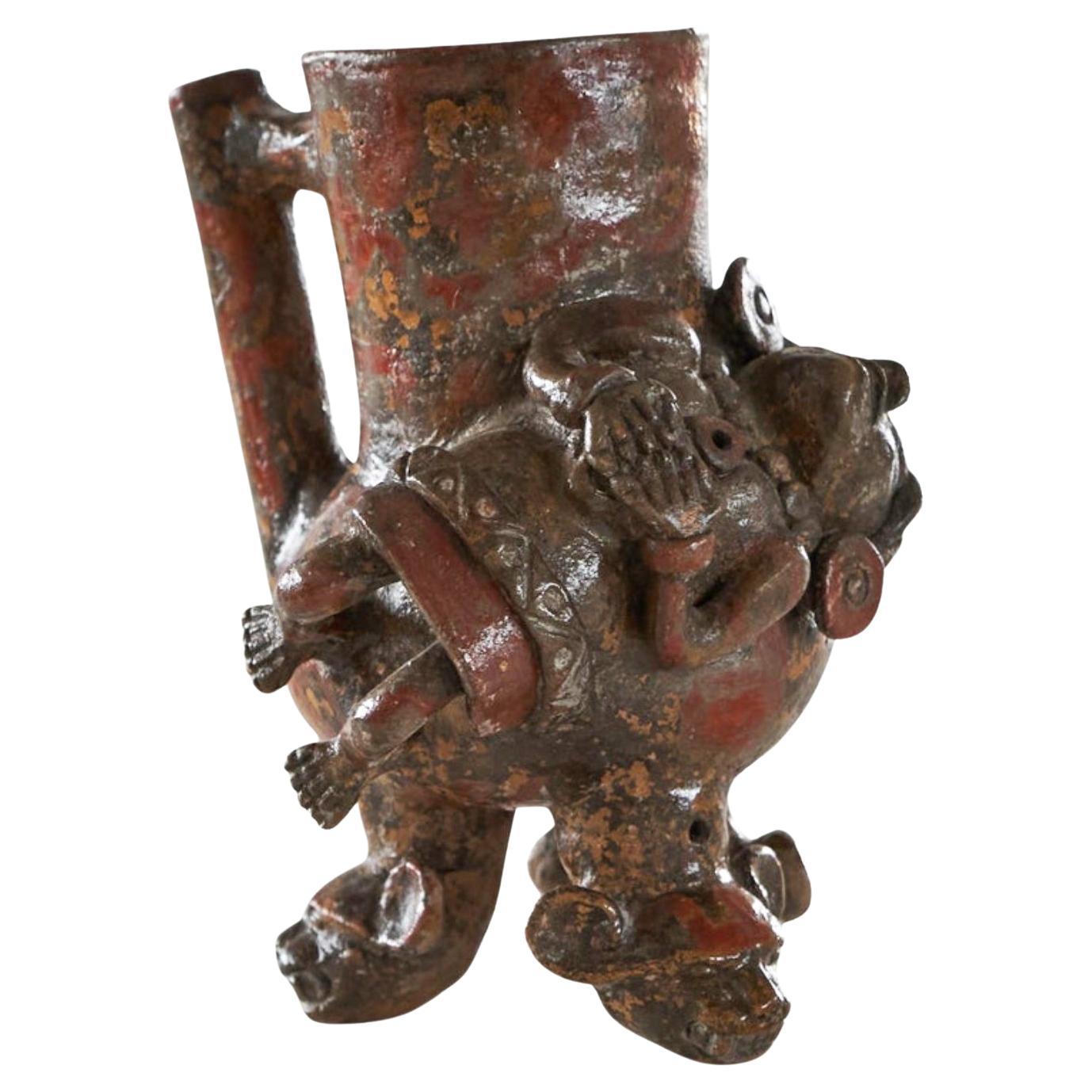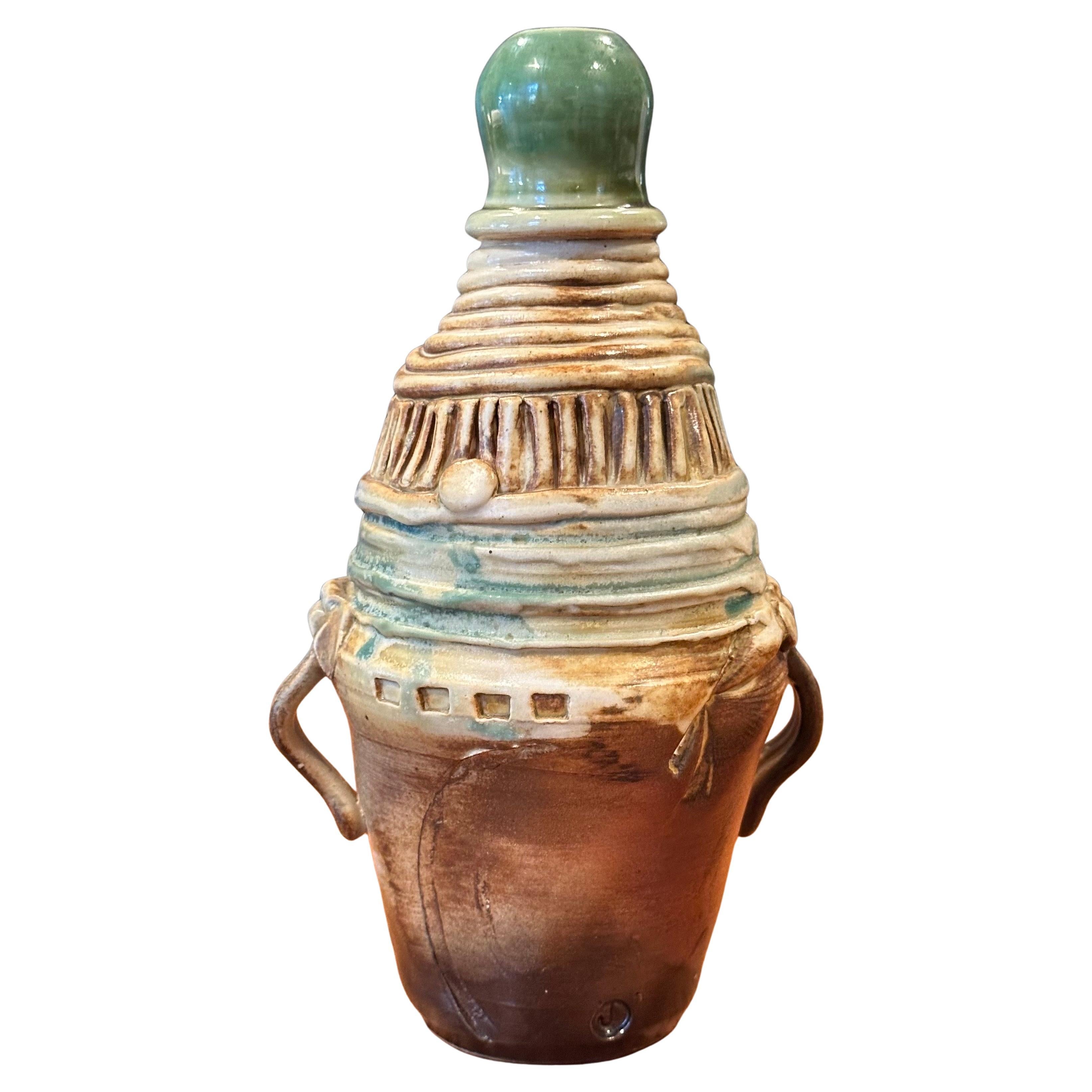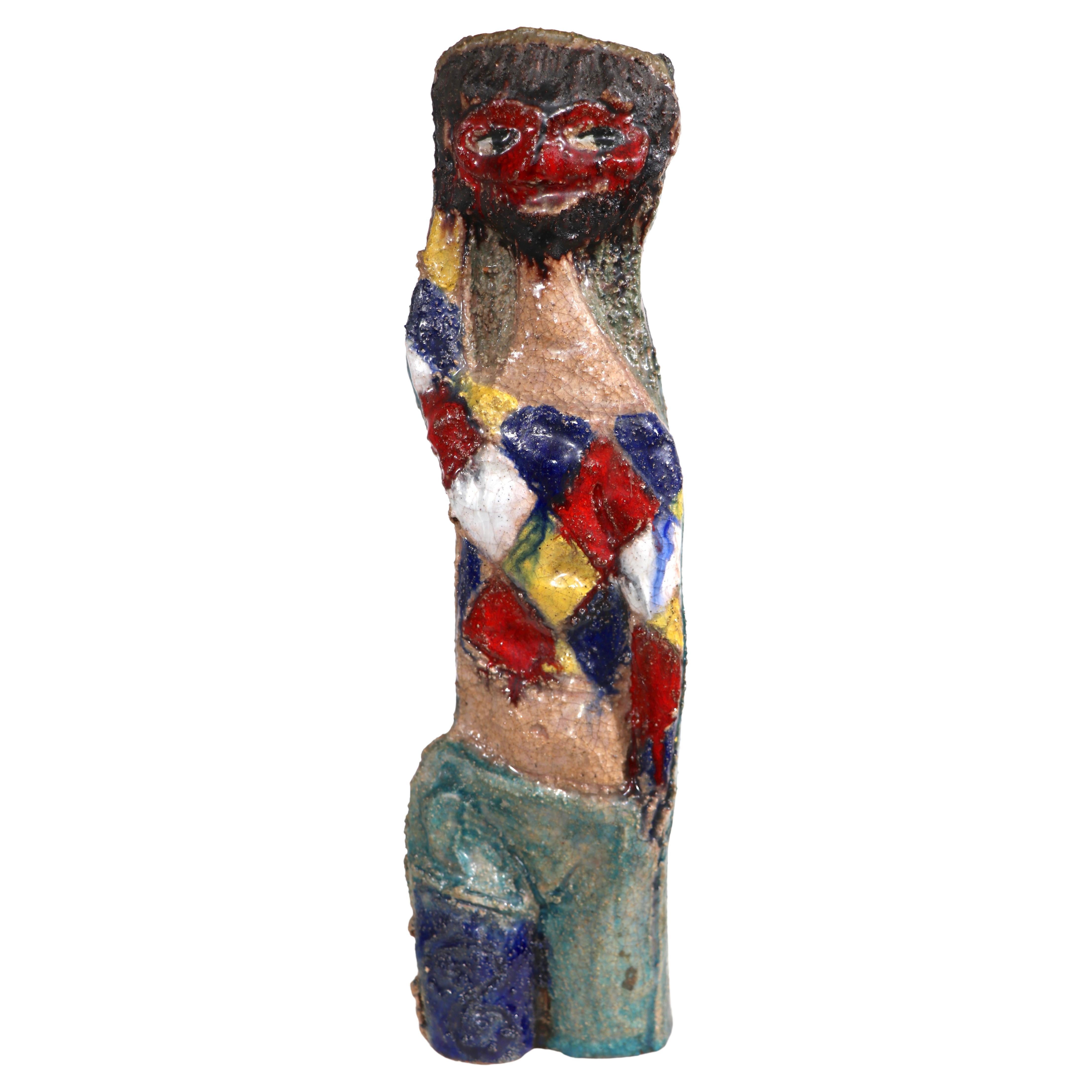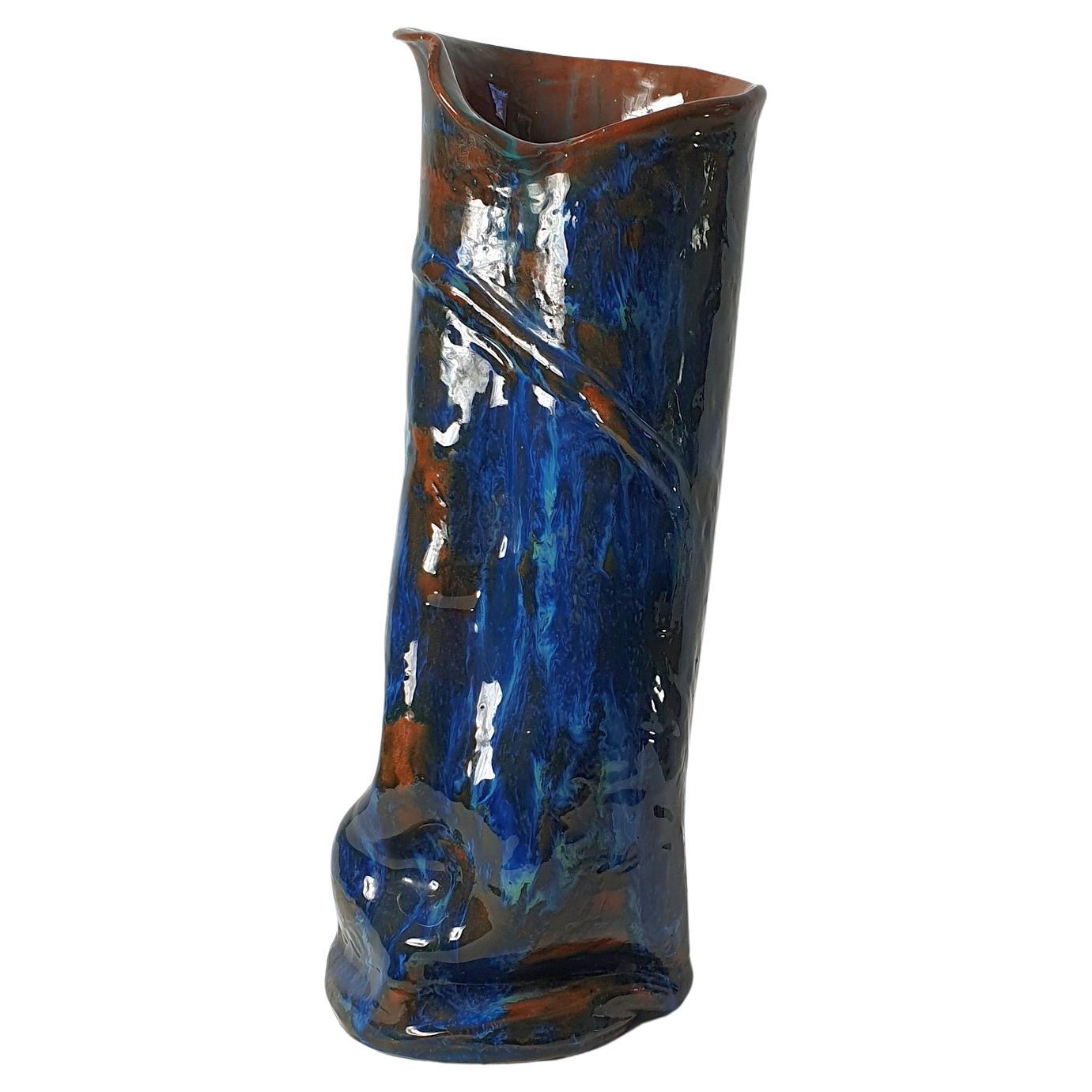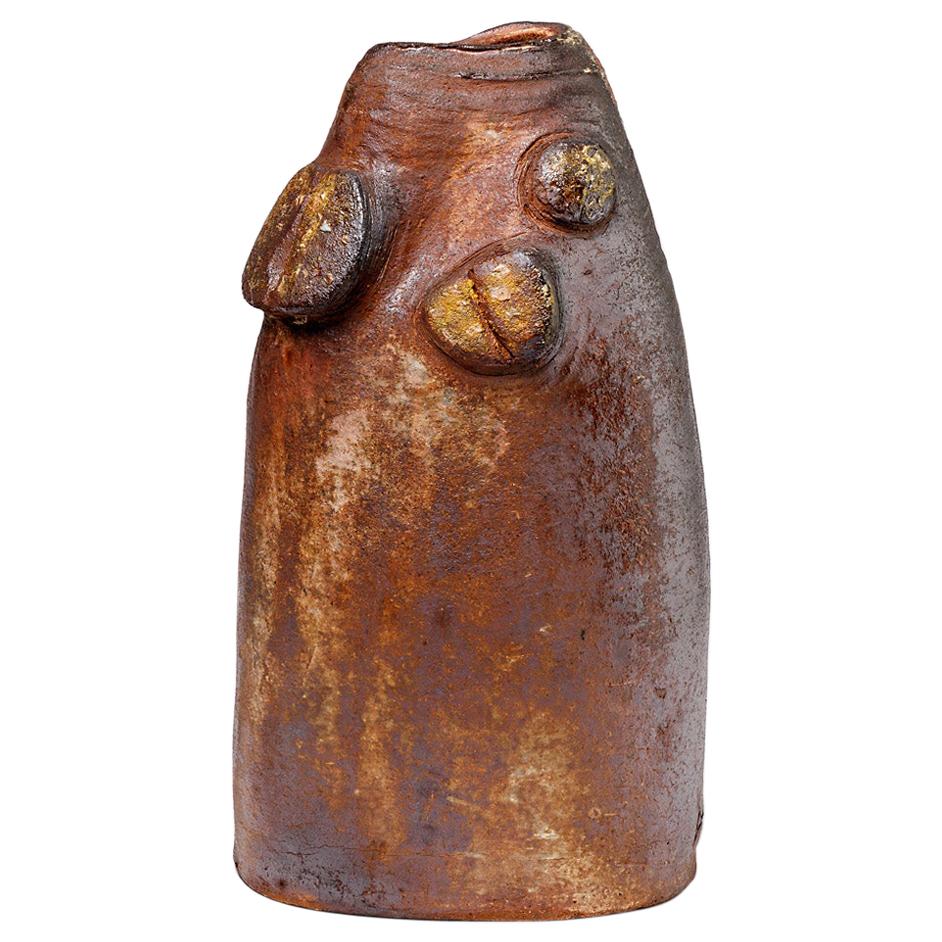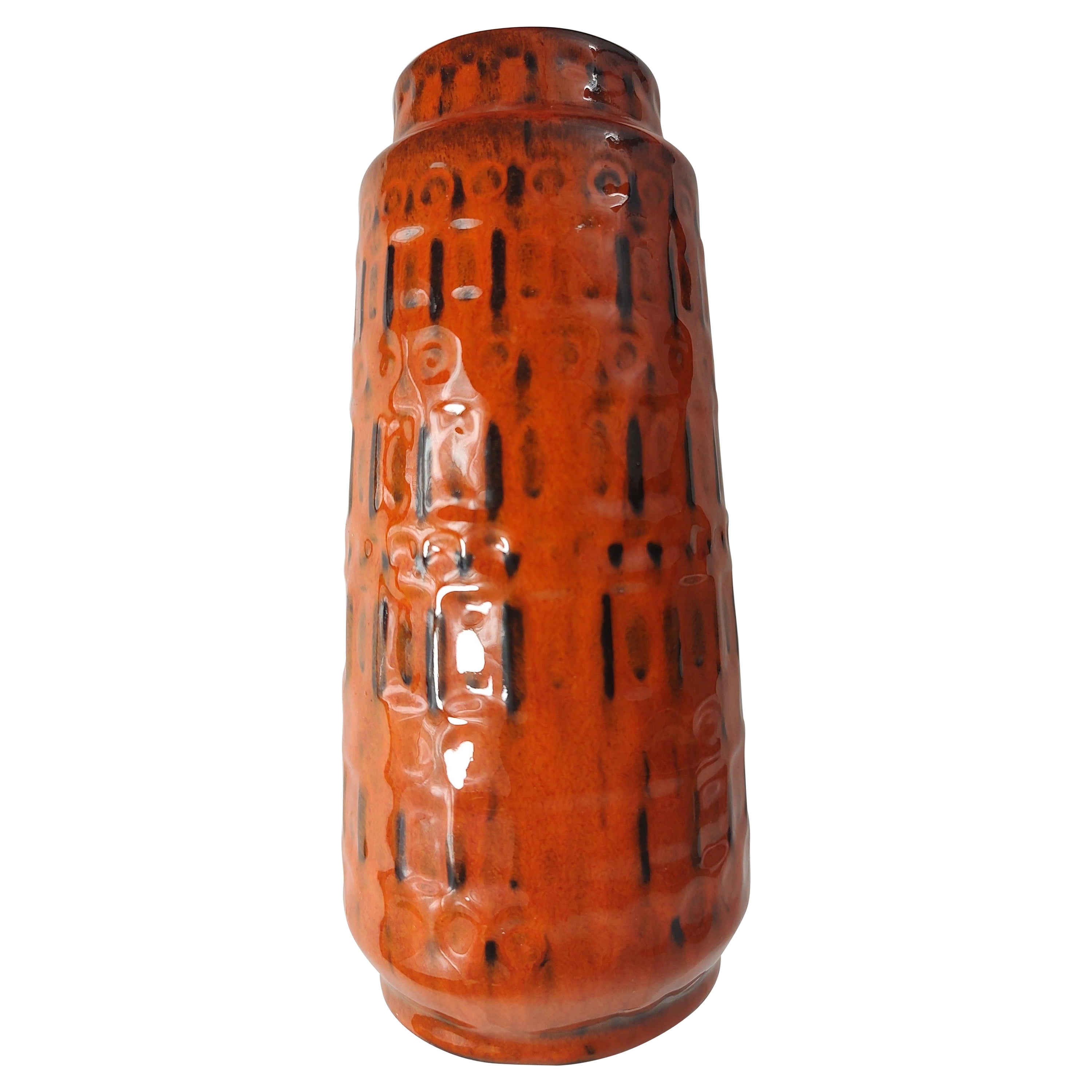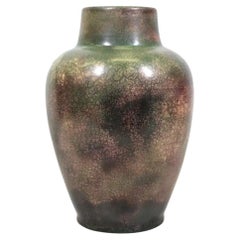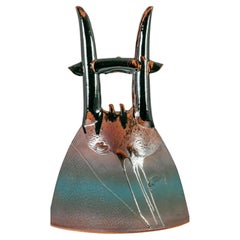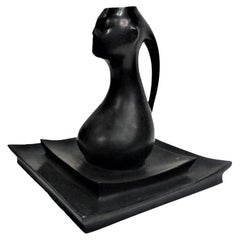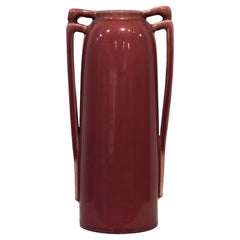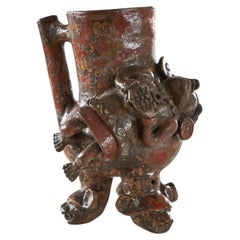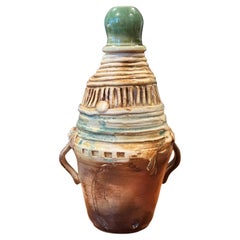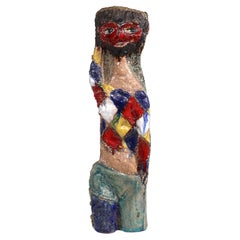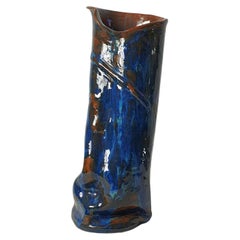Items Similar to Expressionist Ceramic Sculptural Vase Attributed to Vally Wieselthier, c. 1920
Want more images or videos?
Request additional images or videos from the seller
1 of 10
Expressionist Ceramic Sculptural Vase Attributed to Vally Wieselthier, c. 1920
$7,800
£6,072.82
€6,906.55
CA$11,222.34
A$12,327.24
CHF 6,442.29
MX$147,012.56
NOK 81,576.85
SEK 75,995.71
DKK 51,608.98
About the Item
Although unsigned, this magnificent Austrian expressionist art ceramic sculptural vase with three receptacles is attributed to Vally Wieselthier for Wiener Werkstatte, ca. 1920.
Valerie "Vally" Wieselthier (Austrian-American, 1895 – 1945) was an outstanding ceramic artist. She was born to a Jewish family in Vienna, Austria. Her father, Wilhelm Wieselthier was a lawyer. Valluy attended theWiener Frauenacademie in Vienna from 1912 to 1914 and studied at the Vienna School of Applied Arts with Rosalinda Rothhansl, Kolo Moser, Jodef Hoffmann and Michael Powolny from 1914 to 1920. In addition, she worked as an auxiliary nurse during the First World War.
From 1917 to 1922, she worked for the Wiener Werkstatte. From 1922 to 1927, she ran her own ceramic workshop in cooperation with the Augarten porcelain factory, which was newly founded in 1923, but also with other companies such as Friedrich Goldschider, Gmundner Keramik and Lobmeyr.
Her expressive and humorous porcelain figures attracted attention at the Exposition Internationale des Arts Décoratifs et industriels modern in Paris in 1925 and are considered typical examples of the Art Deco style style. From 1928, the artist increasingly moved her center of life to the United States. She went to the International Exhibition of Ceramic Art in New York City in October 1928. In 1933, she moved to Chicago with Paul Lester Wiener and worked as a designer for the Contempora Group and the Sebring Pottery Company. Her extensive use of lead glazes and the potential effect of lead poisoning on her mental and physical health have not been evaluated, nonetheless. She died on September 1, 1945 of stomach cancer in a New York hospital.
Vally Wieselthier’s work is held by many museums, including the Metropolitan Museum of Arts in New York City of Arts and the Museum of Applied Arts in Vienna, Austria.
- Attributed to:Vally Wieselthier (Sculptor)
- Dimensions:Height: 13.25 in (33.66 cm)Width: 10.5 in (26.67 cm)Depth: 8.75 in (22.23 cm)
- Style:Expressionist (Of the Period)
- Materials and Techniques:
- Place of Origin:
- Period:
- Date of Manufacture:ca. 1920
- Condition:Wear consistent with age and use. We make our best effort to provide a fair and descriptive condition report. Please examine photos attentively, as they are an integral part of the description. Send us a message to request more details or discuss price.
- Seller Location:New York, NY
- Reference Number:1stDibs: LU2819331886082
About the Seller
5.0
Gold Seller
Premium sellers maintaining a 4.3+ rating and 24-hour response times
Established in 1993
1stDibs seller since 2017
92 sales on 1stDibs
Typical response time: 2 hours
- ShippingRetrieving quote...Shipping from: New York, NY
- Return Policy
More From This Seller
View AllArts & Crafts Chinese-Form Ceramic Vase, ca. 1900
By Roseville Pottery
Located in New York, NY
American Arts & Crafts
Chinese-Form Pauleo Pattern Glazed Ceramic Vase
In Manner of Roseville for Tiffany
Circa 1900
DIMENSIONS
Height: 15.75 inches (40.01 cm)
Diameter: 10.5 inch...
Category
Antique Early 1900s American Art Nouveau Vases
Materials
Ceramic
Japanese Contemporary Grand Pottery Sculpture, Ca. 1980
Located in New York, NY
Japanese Contemporary Grand Pottery Sculpture, Ca. 1980
ABOUT
This absolutely unique late 20th Century pottery sculpture with bamboo-styled formed handles features a wonderful artis...
Category
Vintage 1980s Japanese Japonisme Abstract Sculptures
Materials
Pottery
Alfonso Canciani, Viennese Secession Orientalist Bronze Vase, c. 1910
By Alfonso Canciani
Located in New York, NY
Alfonso Canciani (Italian-Austrian, 1863-1955) was a famous Italian-Austrian sculptor of the period of accession to the Viennese Secession. Son of a stonemason, after a realist period he managed to establish himself as a leading sculptor of the Viennese Secession. In fact, he worked in Vienna, where he had enrolled in 1886 at the Academy of Fine Arts, then at the Higher School of Sculpture and finally at the Special School, where he obtained the Rome prize for the sketch for Dante's Monument.
He developed a notable business obtaining important prizes and numerous commissions. First among the sculptors of the Viennese capital, he was invited to join the Association of the Viennese Secession, of which Klimt was magna pars, after the exhibition of Dante's group in 1900 at the Secession exhibition, and obtained the most important Austrian artistic prize, the Kunstlerlpreis.
This same work, presented in 1910 in Berlin, at the Great Art Exhibition, also received an important recognition here. He obtained the Rome prize in 1896, exhibited successfully in Munich and in 1899 at the III International Art Exhibition in Venice.
In that period he made some statues of saints for the cathedral of Santo Stefano in Vienna, the monument to Wagner, the bust of Nietzsche for the University, the scepter and the gold chain of the University Rector, figures of Italian poets ( Petrarch, Boccaccio, Tasso, Ariosto).
He submitted a sketch for the official monument to Empress Elizabeth, which was then built in Austrisn Gföhl and Pula. At the time of his accession to the Secession, he dedicated himself to decorating the facade of the Artaria house in Vienna in collaboration with the architect Max Fabiani.
He later abandoned the symbolist decorativism of the Jugendstil for a more concentrated and vigorous style, approaching the Belgian sculptor Constantin Meunier for the theme of work, and preferring to exhibit at the Künstlerhaus.
In Vienna, he was generous with advice and help with the Italians and in particular with his fellow citizens (such as the Brazzanese Luigi Visintin, then a university student).
After the First World War, he returned to Italy and lived in Friuli, penalized by the fact that the Habsburg Empire had by now disappeared. Instead of large-scale public monuments, he then devoted himself to engraving medals (e.g. for Benedict XV and for the Italian mission in Vienna in 1919) and to designing funeral monuments (examples in Mali Lošinj and Trieste) and portrait busts (of Generals Carlo Caneva and Antonio Baldissera in Udine, sculptures of the War Memorial of Corno di Rosazzo). After all, he had already executed the Bab grave monument in the Döblinger cemetery in Vienna in 1909.
He taught in Trieste from 1920 until 1935, at the local school of industrial art, where he had Marcello Mascherini...
Category
Vintage 1910s Austrian Jugendstil Vases
Materials
Bronze
Japanese Art Nouveau Awaji Ware Art Studio Pottery Flower Vase, ca. 1900s
Located in New York, NY
Japanese Art Nouveau
Flower Vase
Awaji Ware Art Studio Pottery
ca. 1900s
ABOUT AWAJI WARE ART STUDIO POTTERY
Awaji pottery was made on the Japanese island of the same name between...
Category
Antique Early 1900s Japanese Art Nouveau Vases
Materials
Pottery
Japanese Art Nouveau, Awaji Ware Art Studio Pottery Flower Vase, Ca. 1900
By Awaji Pottery
Located in New York, NY
DIMENSIONS:
Height: 12.5 inches
Width: 6.75 inches
Depth: 6.75 inches
ABOUT AWAJI POTTERY
Awaji pottery was made on the Japanese island of the same name between 1830 and 19...
Category
Antique Early 1900s Japanese Art Nouveau Vases
Materials
Ceramic
French Beaux Arts, Patinated Bronze Figural Vase by A. Bofill, Ca. 1900
By Antoine Bofill
Located in New York, NY
Antoine Bofill (Spanish-French, 1875-1925) was a Spanish artist and member of the Animalier movement of the 19th century. Best known for his small, decorative bronze sculptures, Bofi...
Category
Antique Early 1900s French Beaux Arts Vases
Materials
Bronze
You May Also Like
Strangely Interesting Experimental Studio Pottery Vase 1970s
By Etie Van Rees
Located in Tilburg, NL
Strangely Interesting Experimental Studio Pottery Vase 1970s
And now for something completely different...
This is a very strange but also very desirable piece of studio pottery fr...
Category
Mid-20th Century European Mid-Century Modern Figurative Sculptures
Materials
Pottery
Small Brutalist Studio Pottery Signed Figural Vase
Located in San Diego, CA
An interesting figural brutalist studio pottery stoneware vase, circa 1970s. It is has an abstract Picasso influenced look to it. Very cool and different piece that is signed on the...
Category
Mid-20th Century American Brutalist Vases
Materials
Stoneware
Sculpted Mid Century Italian Ceramic Vase by Marcello Fantoni
By Raymor, Marcello Fantoni
Located in New York, NY
Unusual sculpted ceramic pottery vase by noted Italian artist Marcello Fantoni. Polychrome volcanic glaze finish on dimensional vase form body, excellent original condition free of d...
Category
Mid-20th Century Italian Mid-Century Modern Vases
Materials
Ceramic, Pottery
Large Studio Ceramic Vase, Italy 1960's
Located in Albano Laziale, Rome/Lazio
A large studio handmade ceramic vase in blue and brown glaze. Marked underneath with the initials A.M. 1969.
Category
20th Century Italian Vases
Materials
Ceramic
$282 Sale Price
20% Off
Ceramic Sculptural Vase to La Borne, Signed at the Base, circa 1970
By Martin Hammond
Located in Saint-Ouen, FR
A big ceramic vase to La Borne.
Perfect original conditions.
circa 1970.
Signed at the base.
Category
20th Century French Beaux Arts Vases
Materials
Ceramic
Mid-Century Modern Scheurich Sculptural Art Pottery Vase W. Germany, circa 1955
Located in Port Jervis, NY
Fabulous West German Vase with the inscription 260 - 22. Unsigned Scheurich Fantastic red orange with faint black partial stripes over embossed clay. In excellent vintage condition w...
Category
Vintage 1950s German Mid-Century Modern Vases
Materials
Clay, Pottery
$260 Sale Price
20% Off
More Ways To Browse
Kolo Moser
Paul Lester Wiener
Miniature Vases Swedish
Battuto Glass
Dumler Breiden
Japanese Art Nouveau
Japanese Vase Metal
Johann Loetz Witwe
Turquoise Pottery
Antique Fluted Vase
Dutch Gouda
Giant Vase
Signed L C
Silver Overlay Vase
Unglazed Terracotta
Vintage Bedroom Sets 1980
White Textured Vase
Willem Van Hooff
